Flames passed down on Miyajima.
Pine torches that connect people.
"Chinka-sai" is held at Mikasahama in Itsukushima Shrine every year on the night of New Year's Eve. Up until the Edo period, it was known as "Tsugomori Yamabushi," and it was a town event held by mountain hermits. After that, the Meiji Restoration occurred, and the event came to be well-established as a fire prevention festival held by Itsukushima Shrine.
As New Year's Eve approaches, people throughout the island begin creating the pine torches that are essential for the festival. One of the central figures here is Mr. Shoma Okada (President of the Youth League of the Miyajima Town Society of Commerce and Industry). He opens up the pine torch-making as a "workshop," continuing an initiative that teaches a wide variety of people including students, foreigners, local residents, and tourists.
Using workshops to spread connections
for pine torch-making.
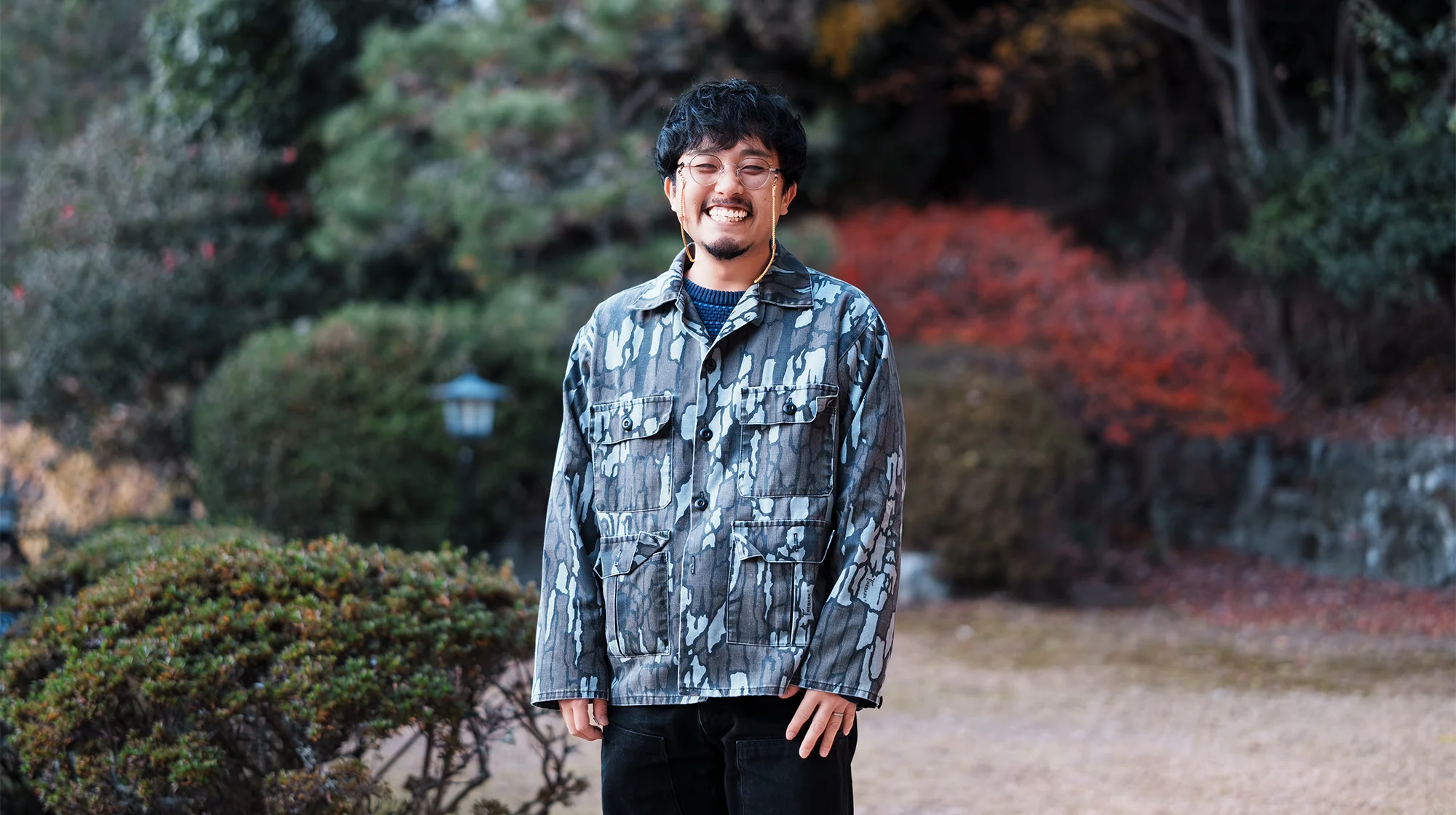
"It's quite hard to make a torch by yourself. By gathering together in a workshop, we have fun, talking boisterously while we work," says Mr. Okada with a laugh.
This initiative is not simply preparation for the festival. It involves students who come from off the island and foreign people, creating an opportunity to enjoy New Year's Eve on Miyajima together. Furthermore, through the experience of completing a torch together with a diverse group of people, the initiative aims to have participants naturally feel the importance of traditional events and methods for community involvement.
"I believe that in the past, Chinka-sai seemed like a 'man's festival' where men ran around carrying the torches, and it only involved insiders. However, after the COVID-19 pandemic, it is now carried out with more safety awareness, and there are more people who actually learn what Chinka-sai means. Now, we reach out to people, asking them if they would like to create torches together, and bring in a wide range of participants," says Mr. Okada.
He feels that the open stance toward people from outside of the community is the key to improving the festival's sustainability in the future.
Responsibility to "keep tradition going"
he noticed after growing up
Born and raised on Miyajima, Mr. Okada left the island while he was a student to attend a university in Hiroshima City, but after graduation, he naturally returned home, due to surrounding circumstances and his family's work. "While I was a university student, it was rough commuting from Miyajima, and I also boarded in Hiroshima. On weekends, I worked part-time and came back to Miyajima to help out...It was decided I would return to the island before I realized it," he remembers.
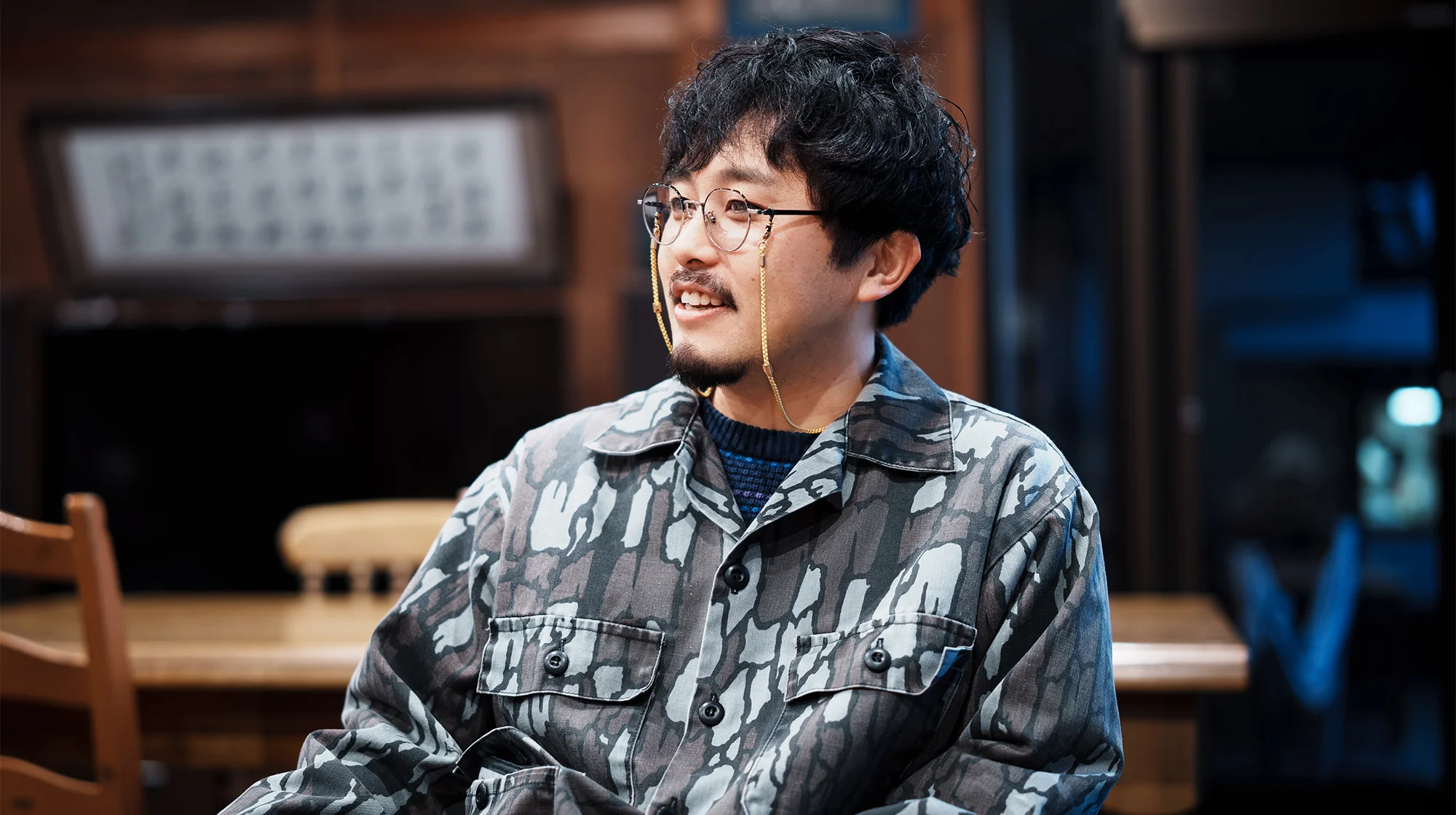
Actually, he was not passionate about making torches at the beginning. However, after he joined the Youth League of the Miyajima Town Society of Commerce and Industry, he found himself in the position of supporting traditional events, and he felt a sense of responsibility grow naturally.
"We young members feel pressured by the many pressing tasks, and strongly feel a desire to avoid any fires or injuries. However, many people from generations older than us feel the history and significance of Chinka-sai itself on a much deeper level. After I learned about the essence of the festival, I moved toward the center of activities more, and the desire to 'keep it going' got stronger and stronger."
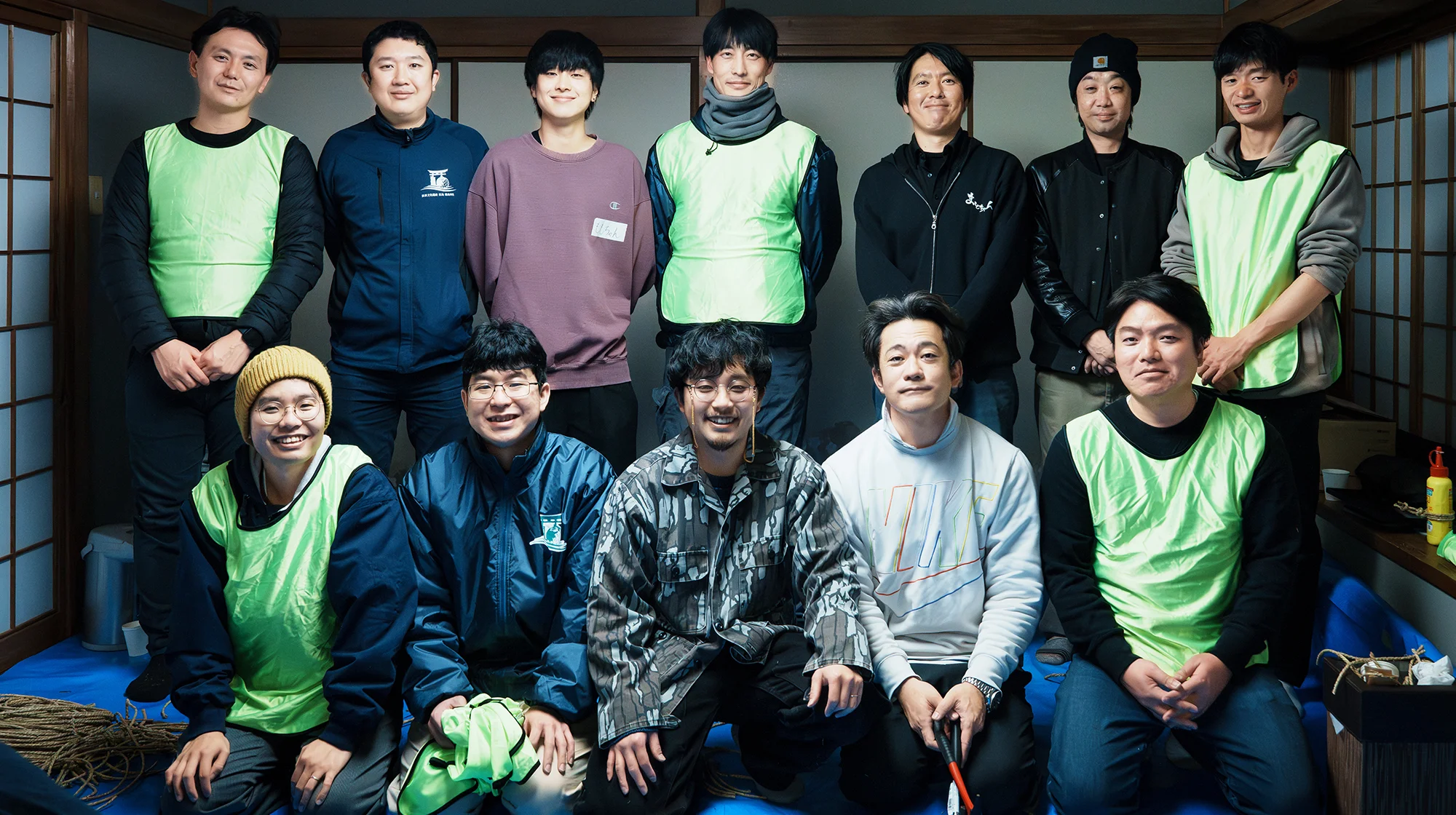
While Chinka-sai itself is a time-honored event continuing from the Edo period, Mr. Okada says that the methods for participating and feelings participants have vary depending on the generation and the era.
"When I was a child, I enjoyed staying up late and felt excited to march together with my friends, but now, I see that the festival has meaning in 'lighting up the new year.'" Mr. Okada feels that the festival embodies prayers and determination.
Searching for a sustainable festival
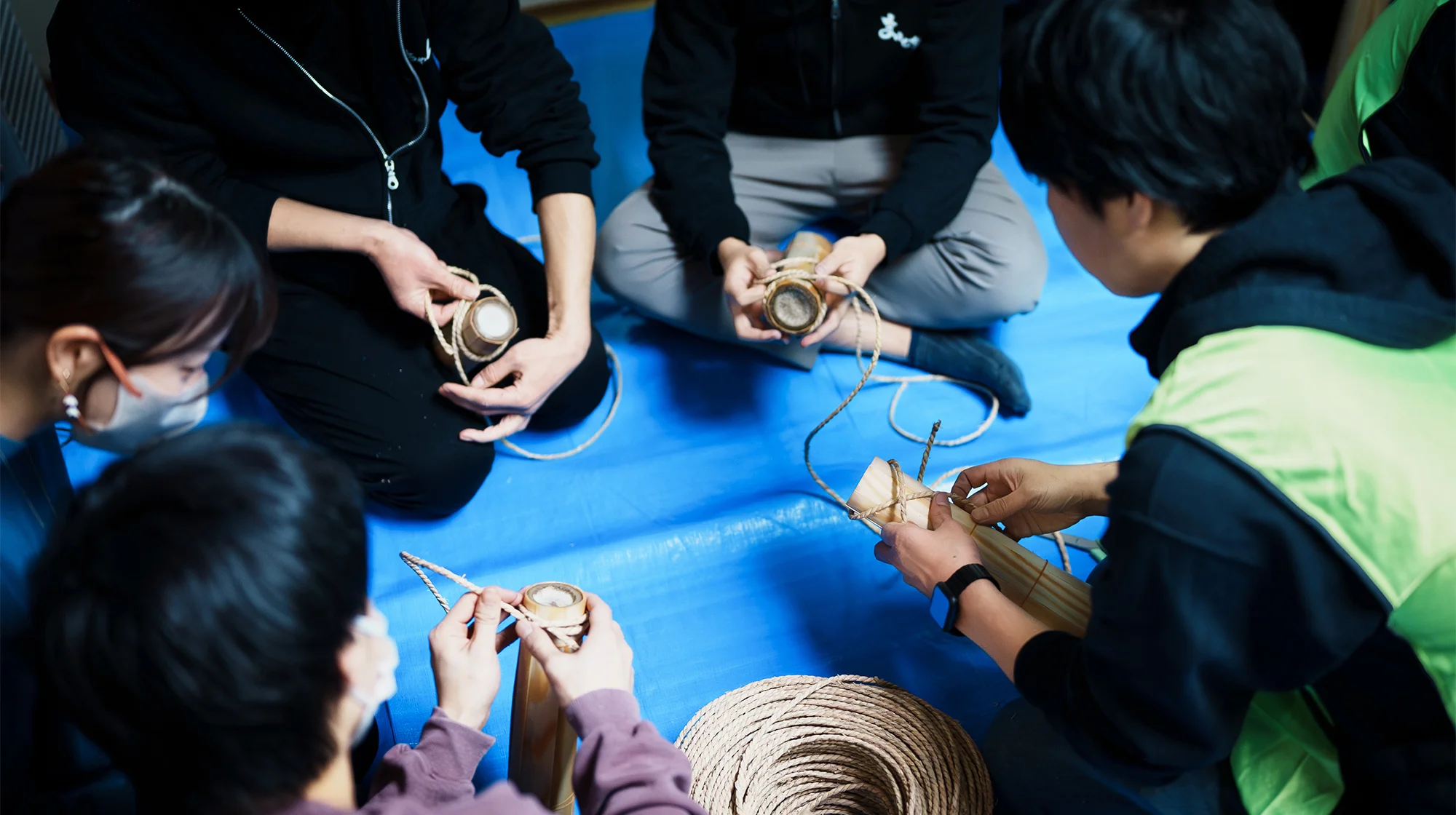
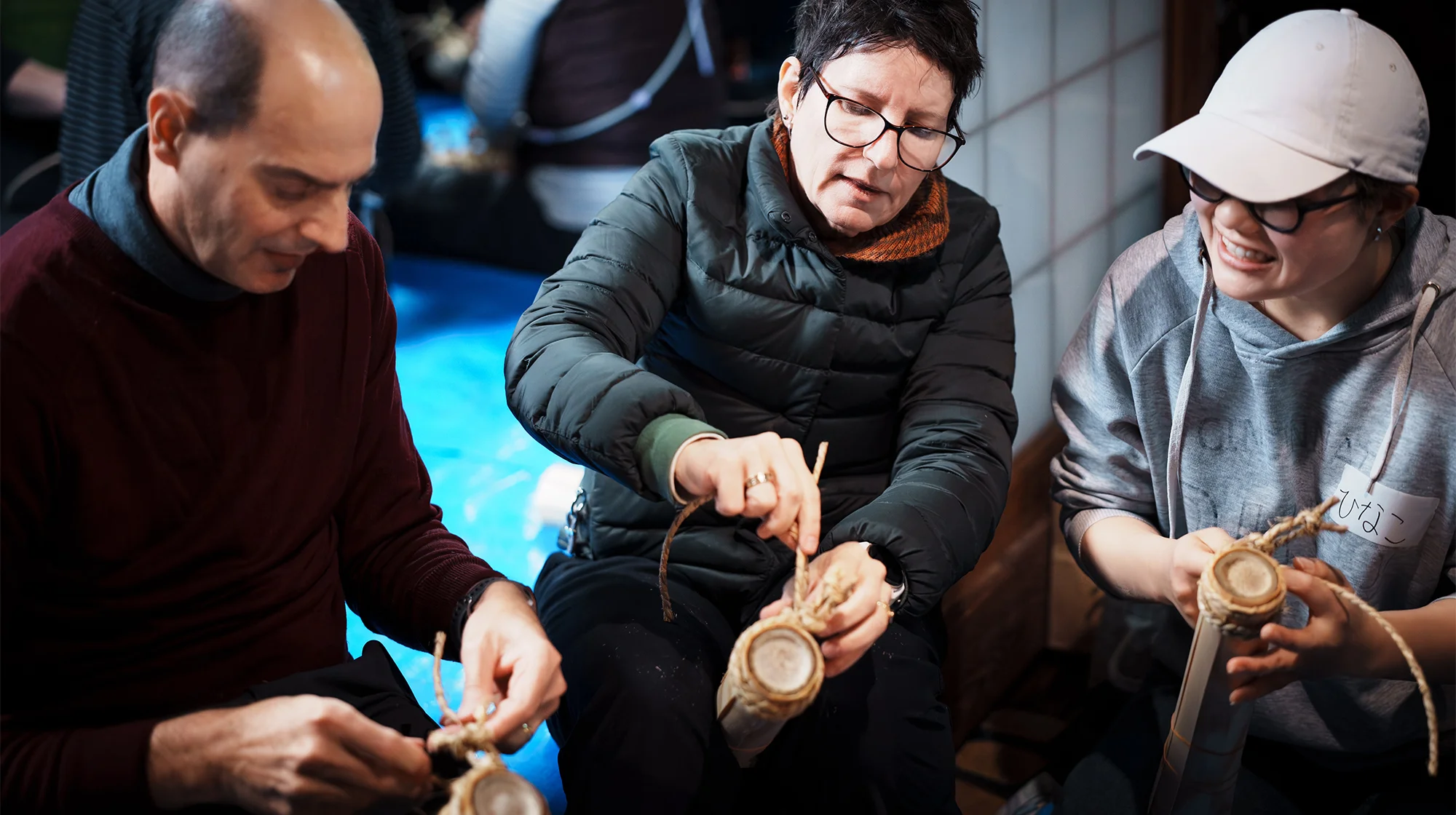
In recent years, Mr. Okada is putting his efforts toward creating more "open workshops" for making torches. There are two types of torches; large ones carried by several adults on their shoulders, and smaller ones that can be held in the hand. In 2024, they prepared approximately 800 small torches, about twice the amount of the previous year. Mr. Okada and other festival participants performed the wrapping-up process for about 650 of these, but the rest were provided to workshops and schools with only pre-treatment done, thus creating opportunities to work together.
The workshops are visited by local children, tourists, and even foreigners. They are held at the guesthouse "Mikuniya," where the Chue-machi Revitalization Project is based, and carried out by the Miyajima Town Society of Commerce and Industry Youth League together with students from the Revitalization Project.
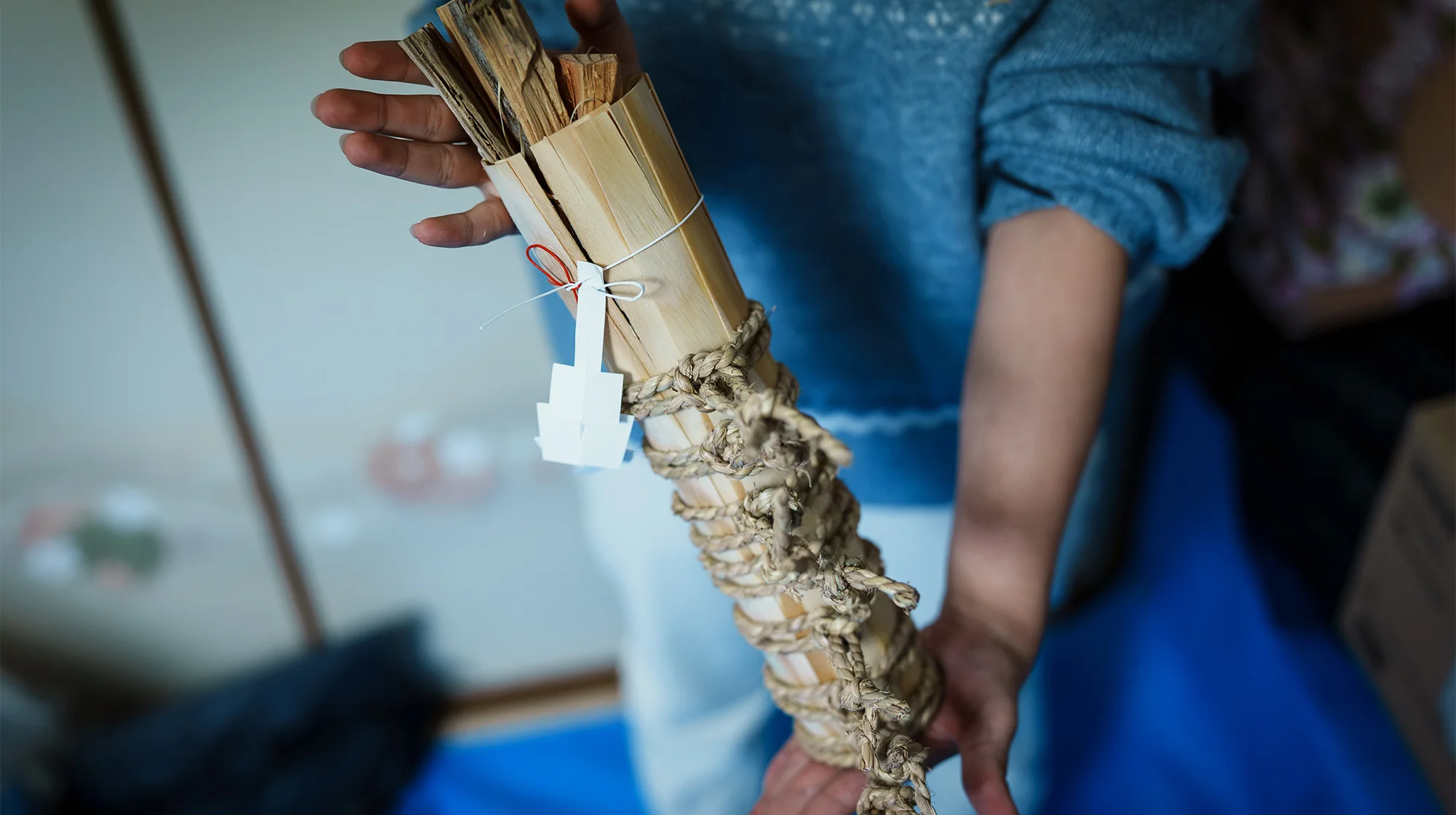
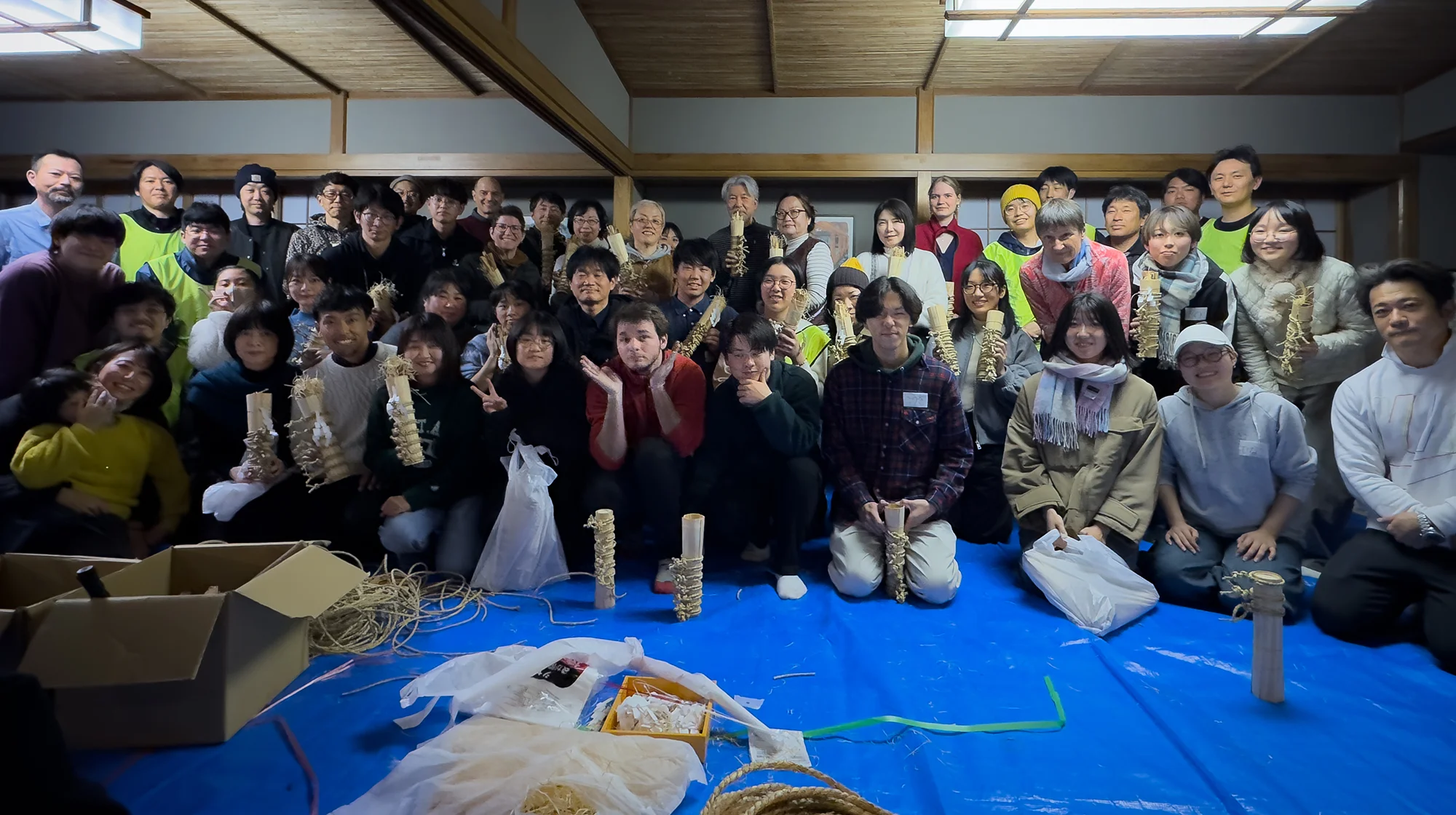
"With help from the students, we went ahead and increased the number this year. The torches we make are used in various ways. For example, inns can invite guests lodging on the 31st to march carrying the large torch, or give the shingle boards wrapped around the torches we made to guests as charms. I hope that through the torches, guests from outside the island can learn about New Year's Eve on Miyajima," says Mr. Okada.
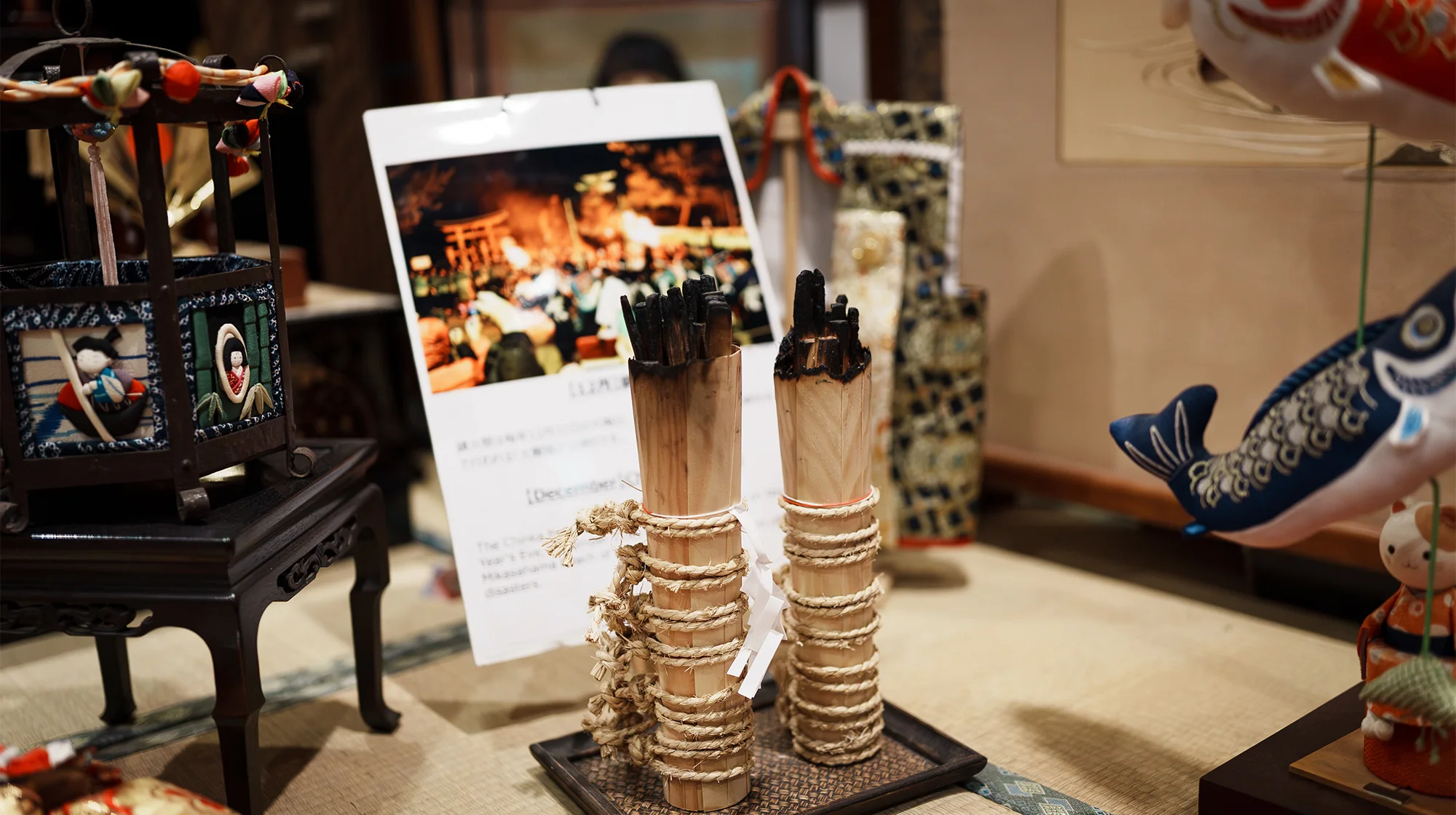
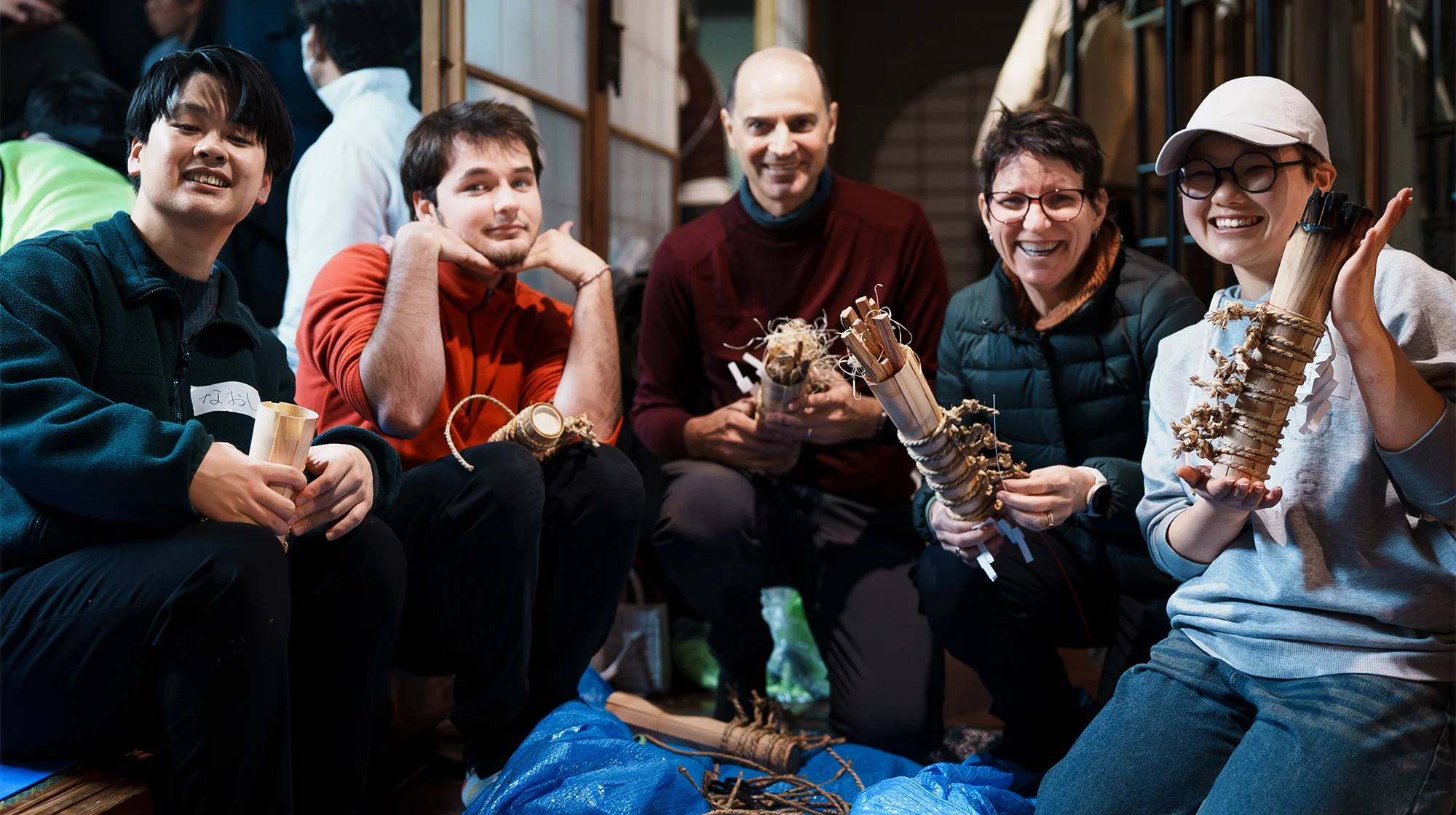
Instead of closing the festival off with only those at the center, they are spreading it outward. We can say this is one form of "sustainable urban development."
"The population continues to decrease, and the number of children is shrinking. To protect our traditional events, it is important for us to proactively accept those who want to participate. If we were to suddenly stop holding the event, it would be extremely difficult to restart it from nothing. That's why we need to take creative steps to keep it going, and the energy from young people and students make things more exciting."
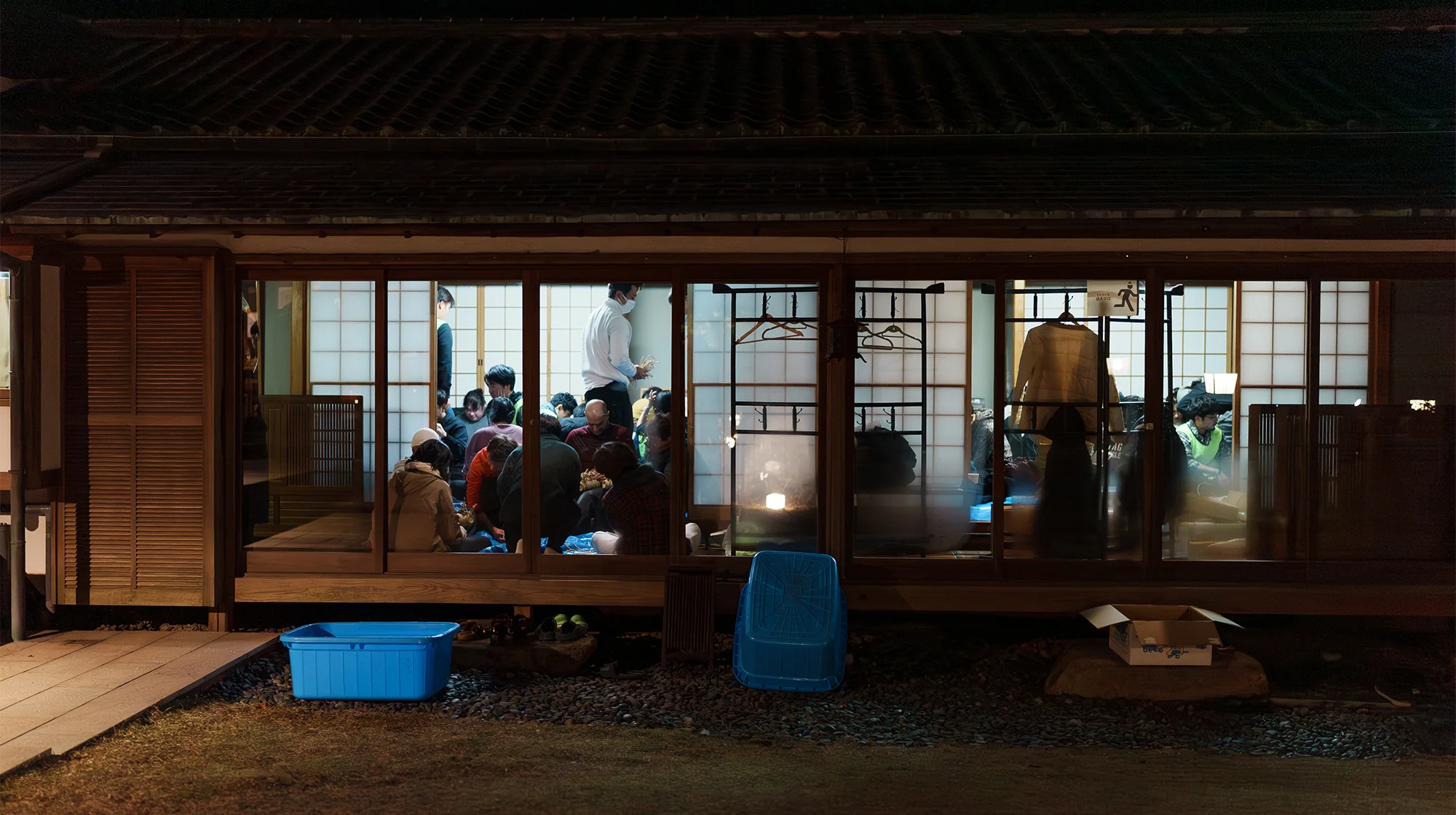
Mr. Okada says that he is truly happy that university students are cooperating in running the workshops.
"Each person has their own reason for participating. It's fine if you want to try it because it looks interesting. I believe that students have things they envision for their lives, and I just hope that the torches can be involved in some small way. When you're a student, you have surprisingly few opportunities to do something together with adults. We get inspired as well. There are so many good things."
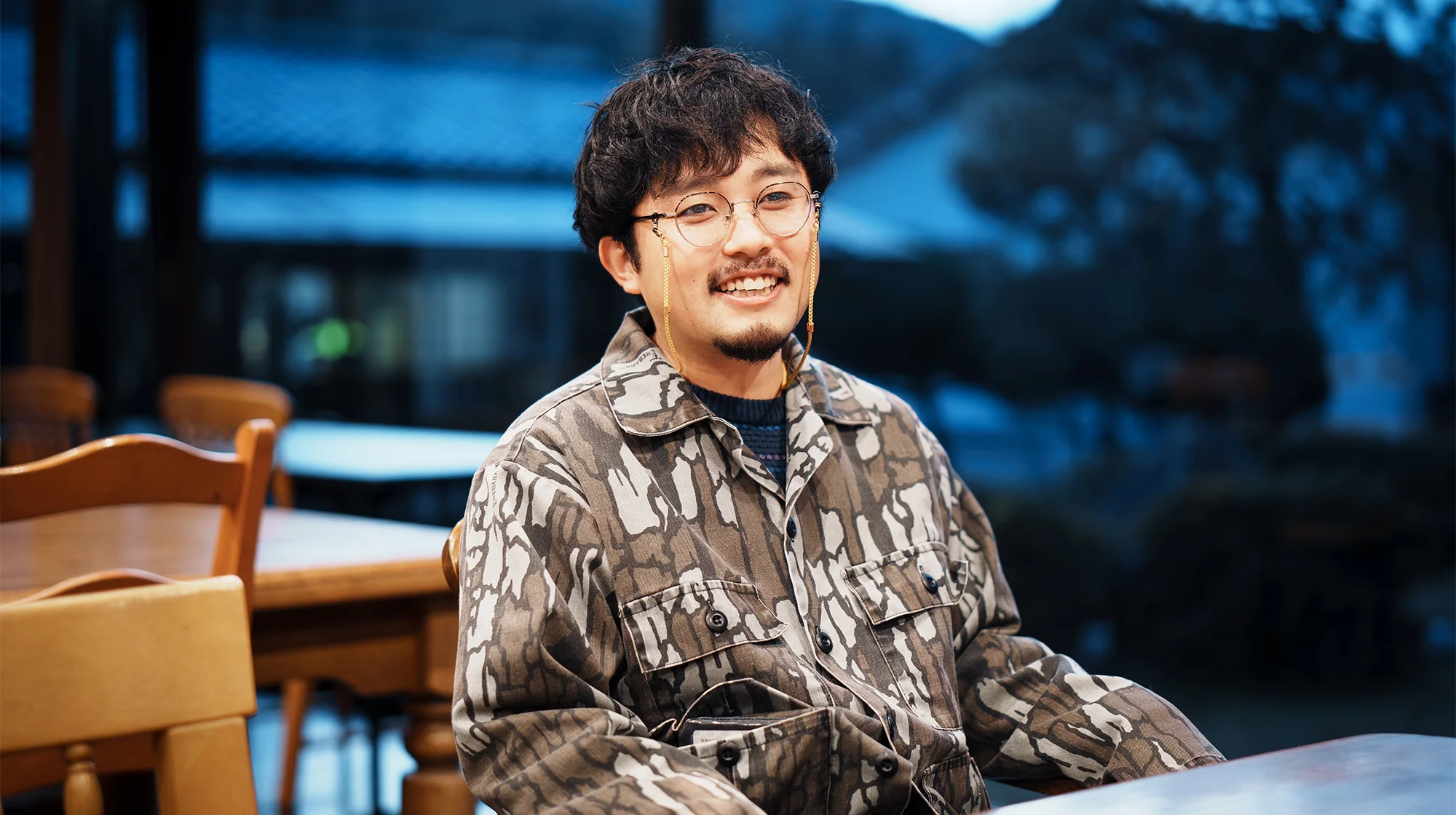
When asked about his goal for the future, Mr. Okada gave us the following answer.
"More importantly than wanting to do it some particular way, our mission is to 'keep it going.' This is not limited only to festivals. Members of the Miyajima Town Society of Commerce and Industry Youth League are all busy, and some members apologize to their families when taking time to participate in community initiatives. We can't let it stop here with us. But actually, this initiative is fun!"
